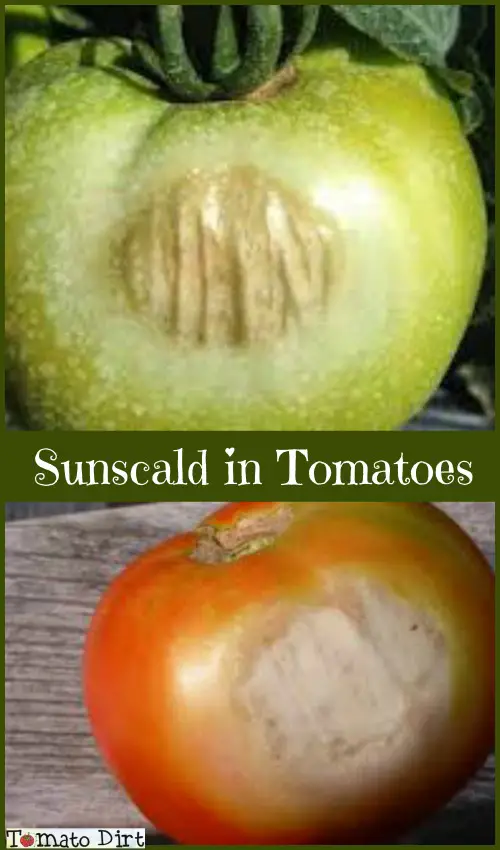Tomato Sunscald: Why Too Much Sun Can Be Hazardous to Your Tomatoes’ Health
Since 2010, Tomato Dirt has garnered 4.8+ million views, making it the web’s leading online source for growing tomatoes in the home garden. Award-winning writer and Tomato Dirt owner Kathy Widenhouse has helped thousands of home gardeners grow healthier tomatoes. Be one of them when you get Tomato Dirt’s Growing Guide here.
Updated 6.22.25
Tomato sunscald is a problem caused by growing conditions – specifically intense, direct sunlight for extended periods during very hot weather. The excessive sunlight discolors patches on ripening or green tomatoes.
What does tomato sunscald look like?
- Sunscald first appears as light patches on green or ripening fruit
- Most often, sunscald develops on the side of the fruit that faces the sun
- As the patches grow, they may blister and may become grayish-white
- Affected sunscald tomatoes can develop black mold
When does sunscald affect plants?
When green or ripening tomatoes get too much direct sun, especially during very hot weather
How can you control sunscald?
Sunscald is irreversible once it’s impacted a tomato, but its progression can be slowed. You can leave exposed fruit on the vine and cover it with lightweight screen, shade cloth, or straw to protect if from further damage. You can also harvest sunscalded tomatoes and let them finish ripening on a windowsill or kitchen counter.
Can you eat tomatoes affected by sunscald?
Sure – as long as black mold hasn’t set in. To eat, simply slice off affected parts.
How can you prevent tomato sunscald?
Try some of these tips!
More Tomato Problems Caused by Growing Conditions
Blossom end rot: how to identify, treat, and prevent it ...
6 Kinds of Tomato Plant Leaf Curl and How to Treat Them ...
15 ways to prevent blossom end rot in tomatoes ...
Why a tomato cracks and what to do about it ...
Tomato Catfacing: How to Identify and Prevent It ...
What causes mealy tomatoes and what to do about it ...
Why tomatoes can develop a hard, white center ...
Tomato anthracnose: how to identify and treat it ...
Help! My tomatoes have green shoulders ...
Gray wall on tomatoes: blotchy ripening on fruit ...
Blossom drop: when a tomato doesn't set fruit ...
Are bumps on tomato stems harmful to plants?
How to identify tomato problems and prevent them ...
Get more tips on our Tomato Problems Pinterest board...
Return from Tomato Sunscald to Tomato Dirt home
As an Amazon Associate and Rakuten Advertising affiliate I earn from qualifying purchases.
SHARE THIS PAGE:
FREE! 10 Must-Know Tomato Growing Tips: 20-page guide
Get yours here:





New! Comments
Have your say about what you just read! Leave a comment in the box below.